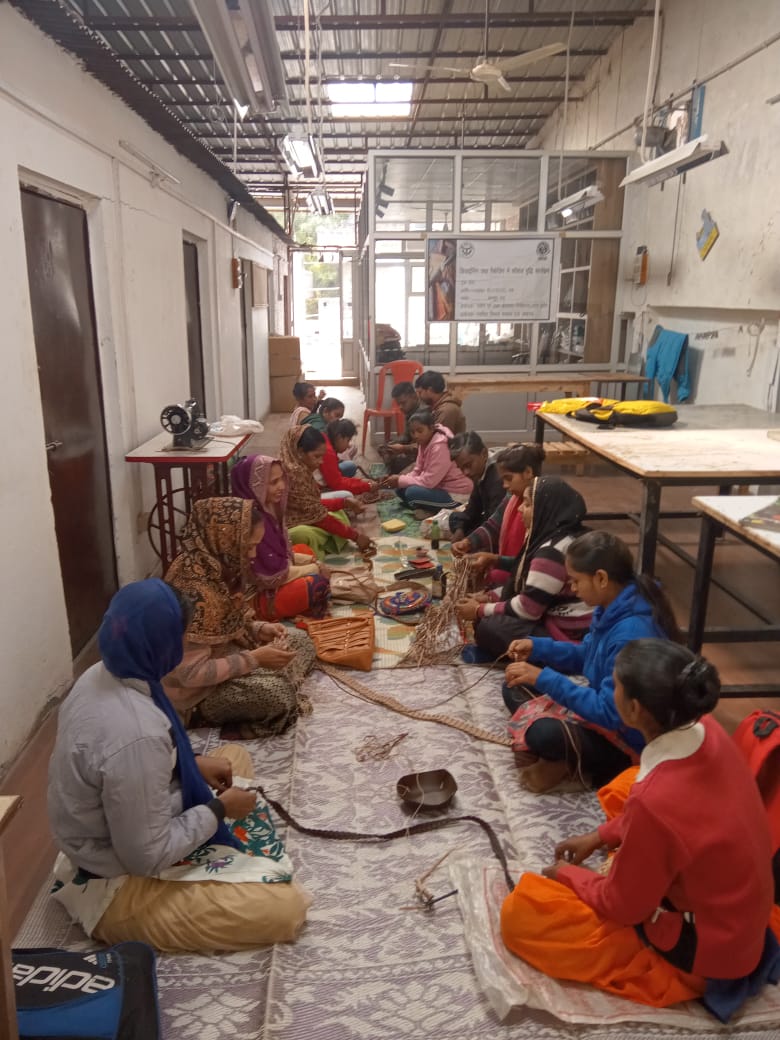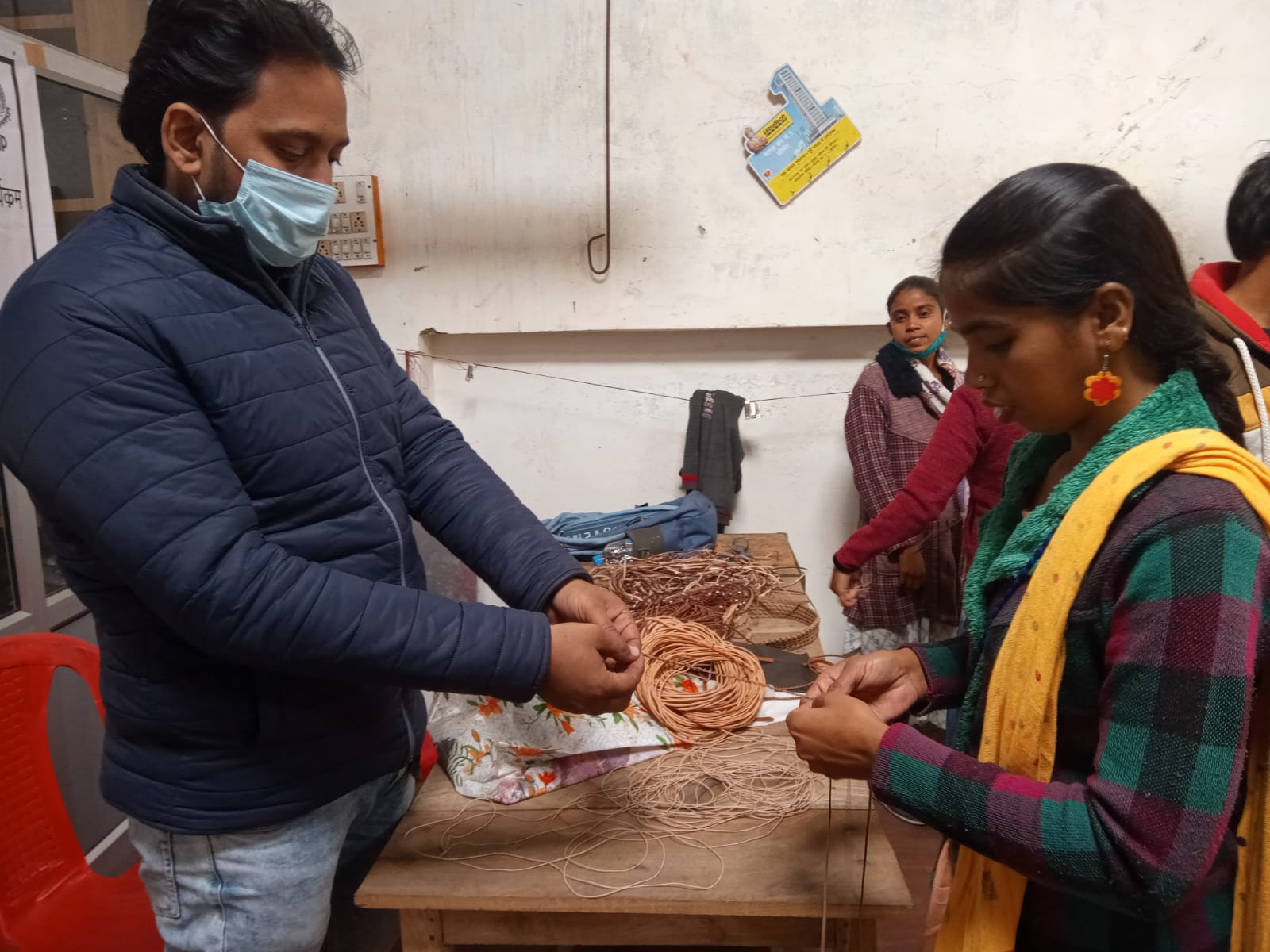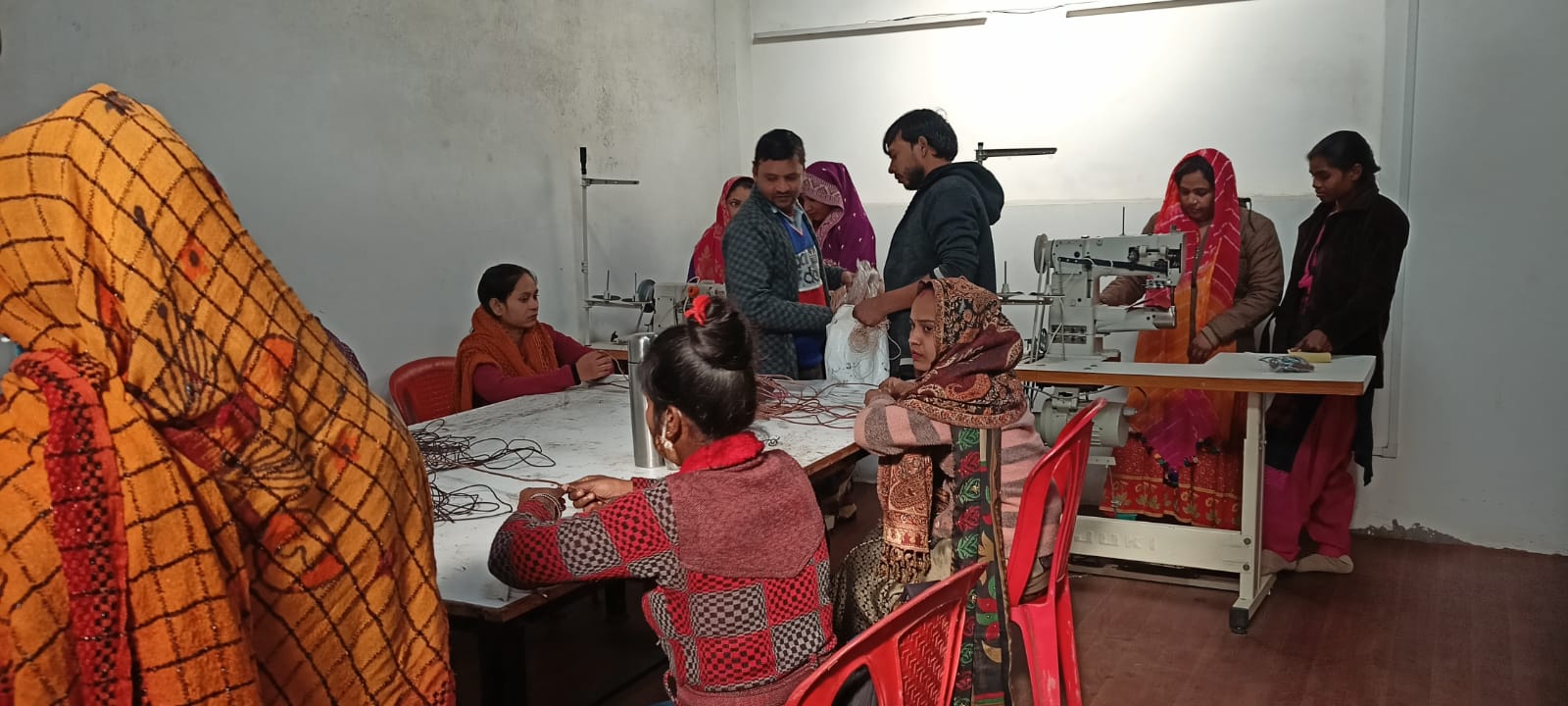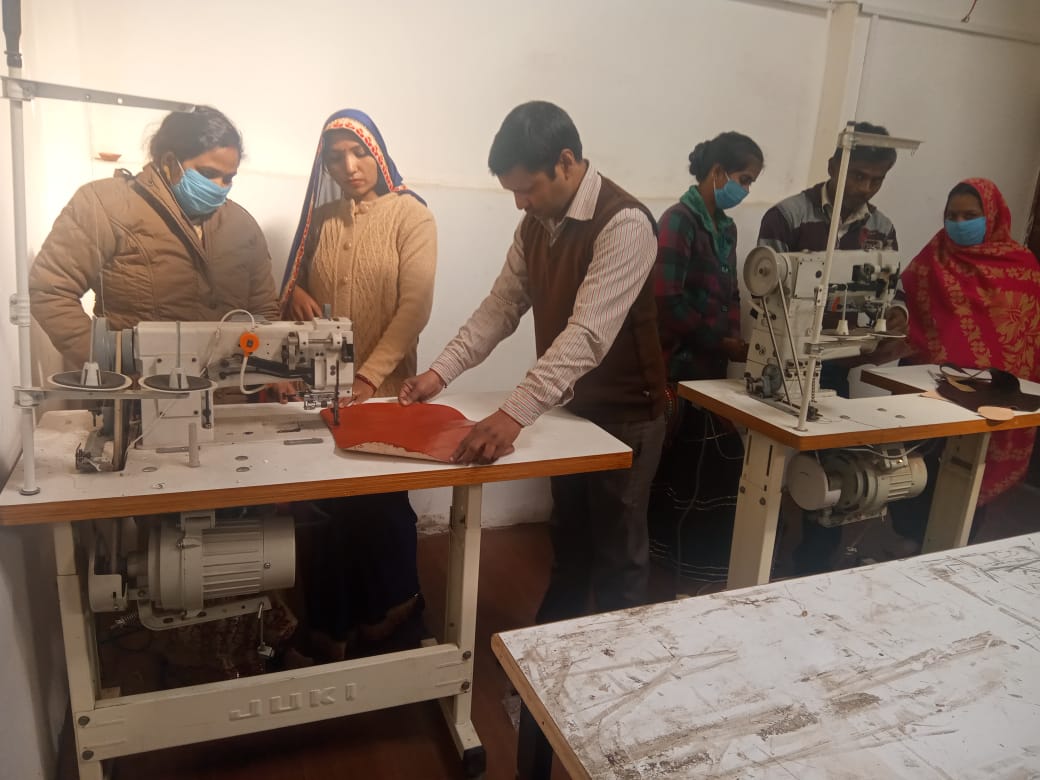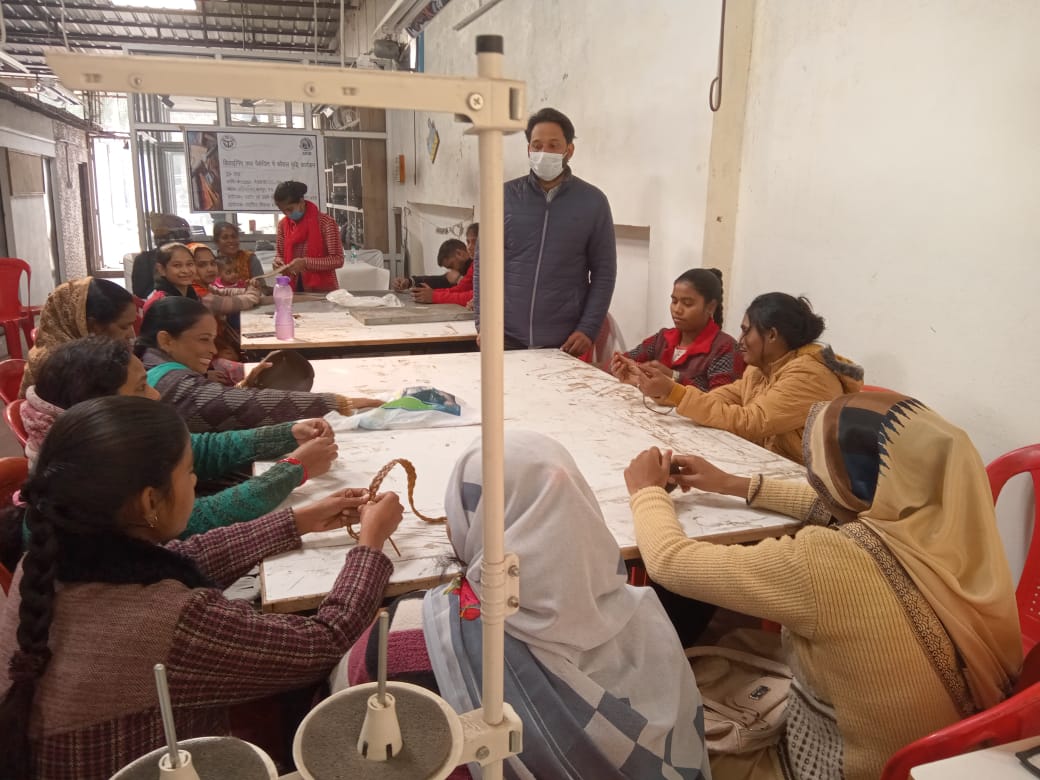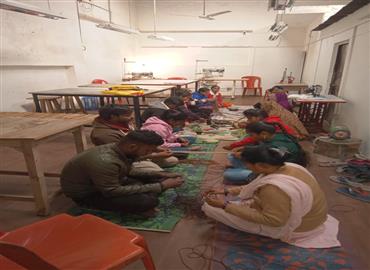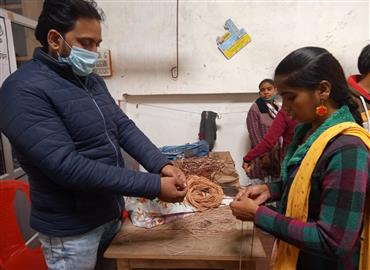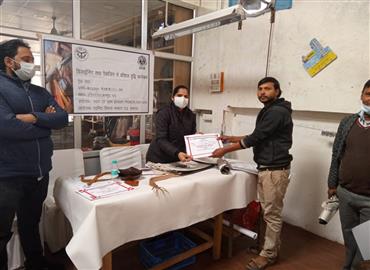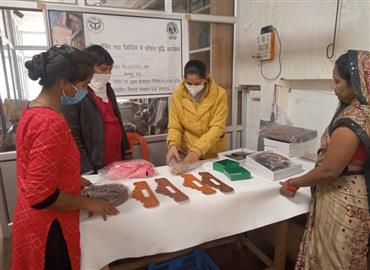Leather WORK-2 Time
Program:- Designing and Packaging, District:- Kanpur , Trade:- Leather Work-2 Time, Training period: 15 days Place:- Kanpur Nagar (U.P.), Sponsor Directorate of Industry and Entrepreneurship Promotion, Kanpur, Uttar Pradesh, Organizer Udyamita Vikas Sansthan, Lucknow, Partner Organization Pahal The Beginning Lucknow, Uttar Pradesh,
Leather crafting or simply leather craft, is the practice of making leather into craft objects or works of art, using shaping techniques, dyeing techniques, or both. Leatherworking has been done for thousands of years and is an ancient art form. The use of leather is found in many ancient civilisations, including Egypt, Greece and Rome. Early humans used animal skins for clothing and shelter. Evidence of the dyeing and use of leather has been found at Mehrgarh, now part of Pakistan. Fresh hides were dried in the sun. The hide was softened by grinding it with animal fat and brains. Hides were preserved by salting and smoking. Leather was used to make clothing, shoes, and water bottles. Leather was used to make armor. Leather was used to make saddles. Leather was used to make sheaths. Leather was used to make intricate works of art, religious artifacts, and personal items.
Leather painting differs from leather dyeing in that the paint remains only on the surface while the dyes are absorbed into the leather. Because of this difference, leather painting techniques are not generally used on objects that can or must bend, nor on objects that will be subjected to friction, such as belts and wallets, because the paint can crack or wear off under these conditions. Leather carving, or "tooling", involves using metal tools to compress wet leather in such a way as to give it a three-dimensional effect. The intention is not to cut the surface of the leather, as is done in filigree.
Objective of the Programme:- The aim of the workshop is to experiment and develop new products as per the needs and preferences of the contemporary market by utilizing the traditional skills of the artisans and introducing new techniques and technologies for improved production. The artisans of handicrafts should be able to experiment boldly in design. For this purpose it is necessary to provide a framework and process which gives the necessary freedom to the designer.
Another main purpose of using packaging is to exaggerate the product. A marketer needs to grab the attention of a viewer to buy the product. Packaging should be able to beautify a product to add to its visual appeal. The purpose of product packaging is to protect the product from damage. Product packaging not only protects the product during transit from the manufacturer to the retailer, but it also prevents damage. With each passing day the packaging material is becoming less and less. Apart from the traditional paper-plastic, glass, metal packaging, people have started to explore the use of new raw materials
It can instantly attract the attention of the audience towards a product. You can create interest in the customer's mind towards a product through attractively designed packaging.
Importance of Designing/Packaging: The role of packaging has become very important as it helps to grab the attention of the audience. Packaging can be used by marketers to encourage potential buyers to purchase a product.Packaging is also used for convenience and information dissemination on how to use, transport, recycle or dispose of the package or product.
Features of Designing/Packaging It is the process of enclosing and covering a product or object. It is a group of general activities of product planning. Packaging is related to the designing and making of wrappers for a product. It is an art and science.v It is a new practice and unique promotional technique. It is a means of safe delivery of the product to the customers or consumers.
It is necessary to provide training on packaging of handicrafts to artisans and exporters to upgrade the present packaging of their handicraft products and to do better business in India and abroad. This will help in improving their sales and livelihood along with the benefits of related fields.


